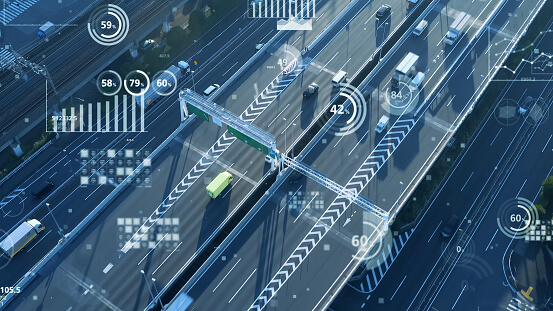What’s Your TMS Missing?
Embedded agentic AI and a unified cloud architecture.
- October 23, 2025
- Bryant Smith. Director of Product Management
- Read time: 3 minutes
Article in Brief
Activating the full promise of artificial intelligence (AI) in transportation requires more than just connecting siloed systems. This article explains why the path to a truly autonomous and agile supply chain is through a radical technology shift. That is, a unified, cloud-native platform architecture where AI is embedded at the core, transforming the TMS from a system of record into a self-optimizing engine of action.
Key Takeaways
- Move Beyond Integration to Unification - Instead of building fragile bridges between siloed systems (TMS, WMS, etc.), the goal should be to operate from a single, unified platform to eliminate data latency and fragility.
- Embed AI at the Core - True transformation comes when AI is an intrinsic part of the operating system, not a "bolt-on" application, allowing it to move from simply providing insights to autonomously executing solutions.
- Shift from a System of Record to a System of Action - A unified platform with embedded AI transforms the TMS from a passive data repository into an active, perpetually learning, and self-optimizing engine for the entire transportation network.
In his latest article titled, The Promise of AI for Transportation supply chain and logistics industry expert, Bart De Muynck discusses how AI is revolutionizing our industry, with its focus on enhancing agility through better analytics, forecasting, and process automation. However, the critical question for supply chain leaders is no longer what AI can do, but how to create an environment where its promise can be fully and pragmatically realized. That path requires a fundamental shift in how we think about the technology that underpins our transportation operations.
Eliminating the Islands: The Power of a Unified Platform
For too long, logistics operations have been hampered by a patchwork of disparate systems. As De Muynck correctly points out in his article, data is often trapped in silos, preventing a holistic view. While integrating these systems is a step in the right direction, true agility and intelligence demand more.
The future is not about building better bridges between isolated islands of data; it's about eliminating the islands altogether. We must move toward a single, unified platform where transportation, warehouse, labor, yard – and even order management functions – coexist and operate from a common data model. When planning and execution are born from the same foundation, the data latency and integration fragility that plague traditional models simply disappear.
From Nimble Fleets to a Single State-of-the-Art Vessel
The discussion of technology architecture must also evolve. The article’s metaphor of a "fleet of nimble speedboats" for a modular TMS is powerful, but it still implies managing multiple, separate components. The next evolution is a platform that is inherently "versionless"— a cloud-native application that is always current for every user. This approach removes the significant burden of upgrades and ensures that innovation, including the latest AI capabilities, is delivered continuously and seamlessly. Instead of managing a fleet, you command a single, state-of-the-art vessel that is constantly being improved without ever needing to be brought back to the shipyard.
Intelligence at the Core: Embedding AI for Seamless Action
A unified architectural approach is the key to unlocking the true power of AI. When AI is not a bolt-on, but is embedded within the core of a unified platform, it becomes exponentially more powerful.
An AI agent can’t just predict a disruption - it can autonomously and immediately execute a solution across transportation and warehouse domains because it lives within the operational system itself. This creates a seamless loop of insight and action, transforming the TMS from a system of record into a perpetually learning and self-optimizing engine.
The Path Forward
The journey to an AI-driven supply chain is not about adopting a single piece of technology. It is about committing to a new architectural vision. By focusing on a unified, versionless platform with intelligence embedded at its core, we can move beyond the promise of AI and begin activating its full potential to build truly resilient, agile, and autonomous transportation networks.
If you haven’t already read Bart’s full article, I encourage you to do so. It offers an insightful look into how AI is can transform transportation management functions by enabling better analytics and smarter forecasting to improve supply chain agility and resilience.






